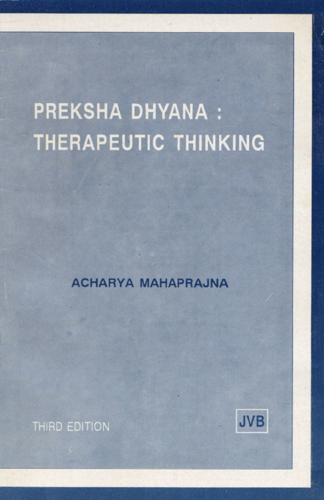From the most ancient times we have realised the need for truth and knowledge and have always strived to expand our sense of awareness and wisdom by means of ancient philosophy as well as modern science. Science has now established that inner harmony can be realised by developing our potential spiritual forces and thereby controlling our primal drives, animal impulses and carnal desires.
It is obvious that our spiritual personality must have a material body to function and perform through. Thus mundane existence functions in duality, i.e. there is an eternal spiritual self(which is non-material) and a material physical body. Both facets of our existence are real but neither is an absolute truth. While the material part is an empirical truth, the spiritual part is a transcendental one. While the former can be directly perceived and is, therefore, obvious, the latter can be realised only by strenuous spiritual exertion. This effort is an effective means of social health and progress.
Dual RelationshipAll our mundane relations - one's family, friends, community, etc.—are part of our material existence whereas the non-material spiritual existence is unattached, unrelated and solitary. One has a long chain of relationships enmeshing one in an indestructible web of association. The family and social life are essential for survival and comfort and cannot be abandoned. On the other hand, if we totally ignore the transcendental reality, this very family and society may sometimes be instrumental to inflict untold misery. In other words, one should neither accept the material relationship to be wholly beneficial nor to be the ultimate reality but should constantly remind oneself of the transcendental solitariness of his spiritual existence. We should realise the complicated dual realities of life and be prepared through the exercise of contemplation of solitariness.
Contemplation of solitariness prepares us to bear the misery of betrayal by the kith and kin with equanimity. In fact, nourishing the falsehood and sacrificing the ultimate truth in the interest of comfort by a person himself is the real betrayal and no one else is to be blamed. The Exercise also helps one to bear the physical solitariness in special cases (e.g. long periods of loneliness by forces on the border and remote stations).
Instructions for the Exercise| 1-2. | Steps 1-2 as in exercise no. 1. |
| 3-4. | Steps 3-4 as in exercise no. 9,except that the colour to be visualized and inhaled is bright green. |
| 5. | Focus your attention on the Centre of Peace and recite the following sentence, first loudly (nine times) and then softly (9 times):
|
| 6. | Contemplate on the transcendental value of this eternal truth on the following lines:
|
| 7. | Breathe slowly and softly and recite "I am solitary" with each inhalation. Now hold your breath and experience solitariness.
sesa me bahira bhava, savve samjoga lakkhana",
and contemplate on its meaning, "Only my real spiritual SELF, characterised by knowledge and intuition, is eternal, all else is non-self and transitory, i.e, their interaction with me is non- eternal.
|
| 8. | Step 7 in the exercise no. 1. |
 Acharya Mahaprajna
Acharya Mahaprajna


